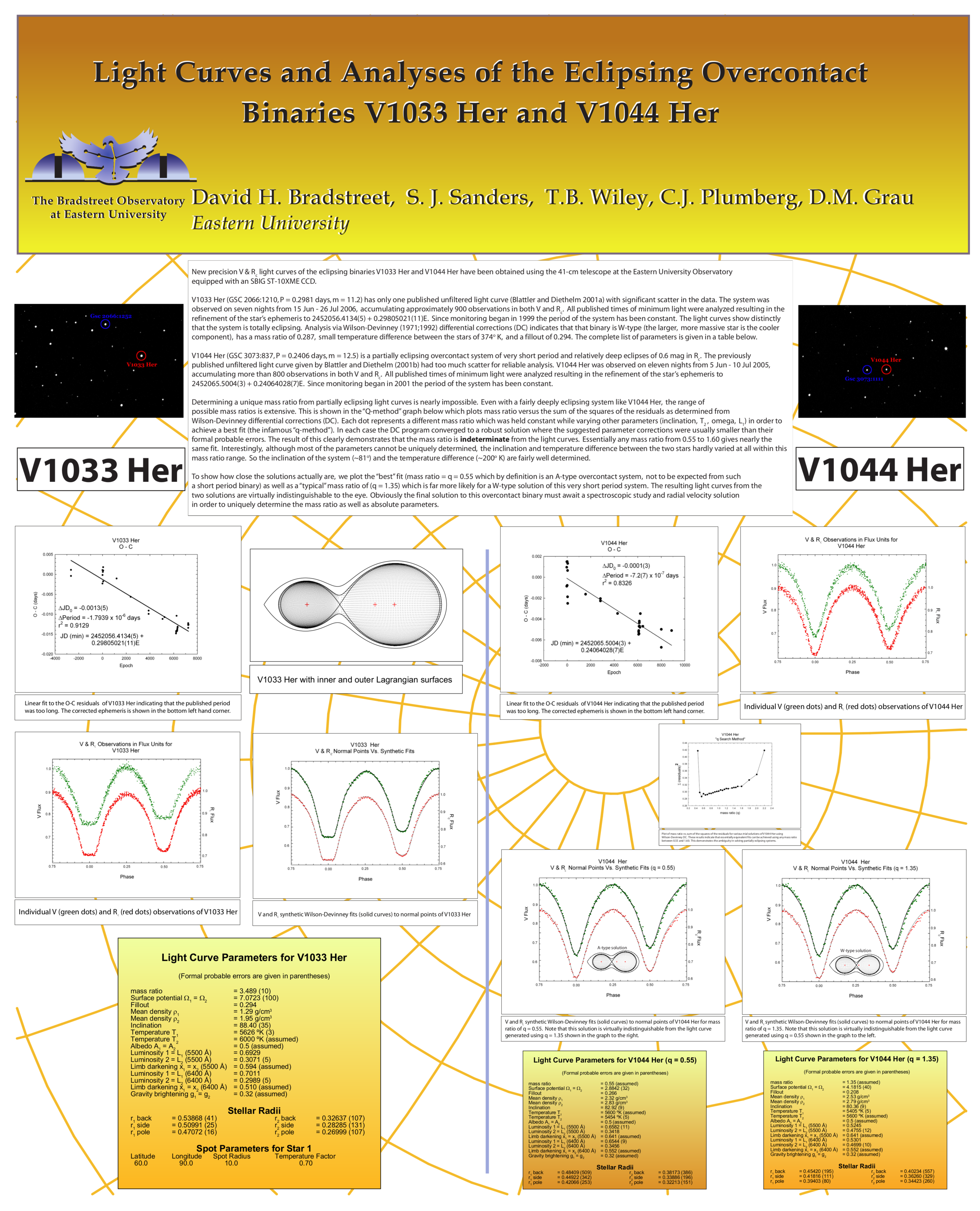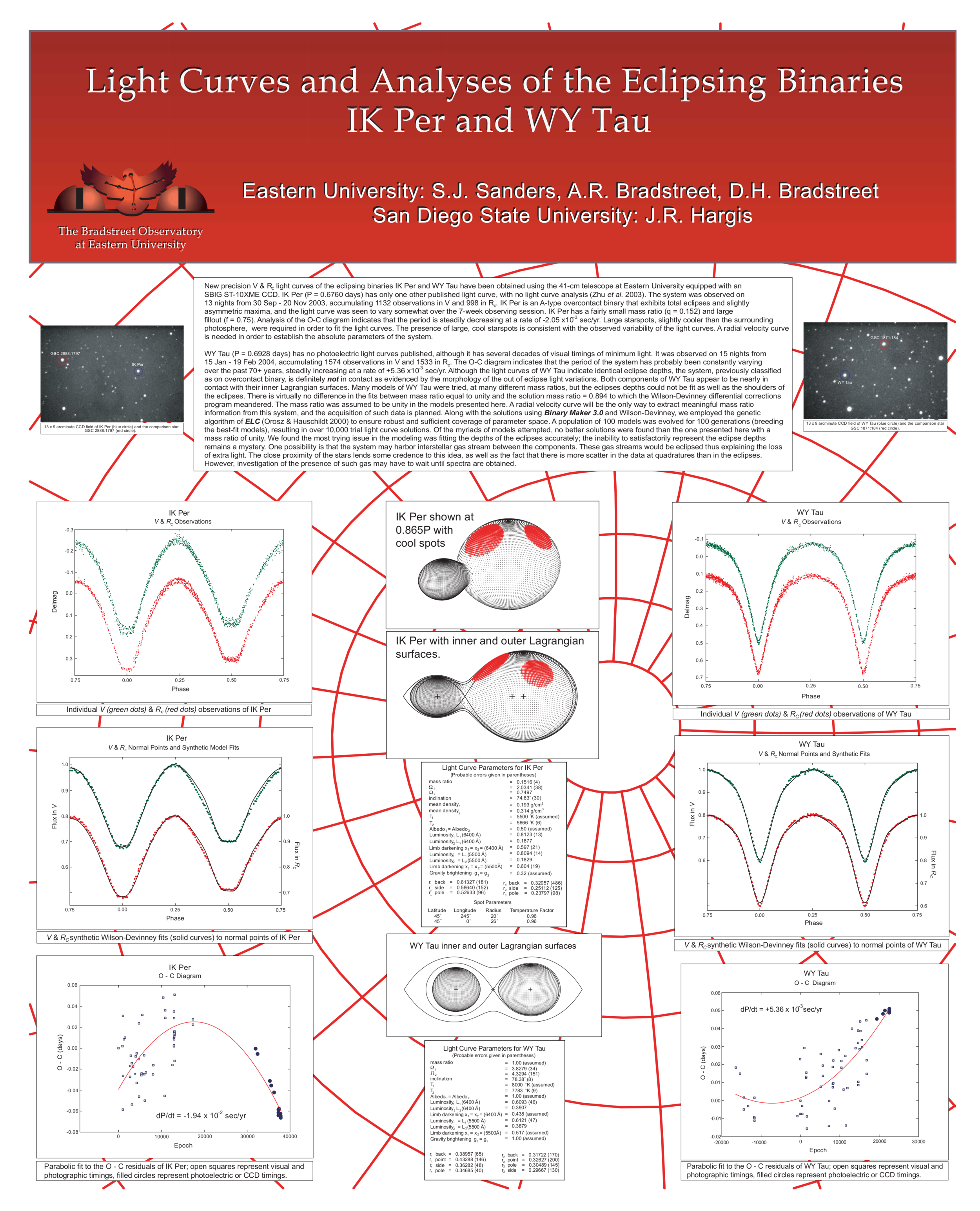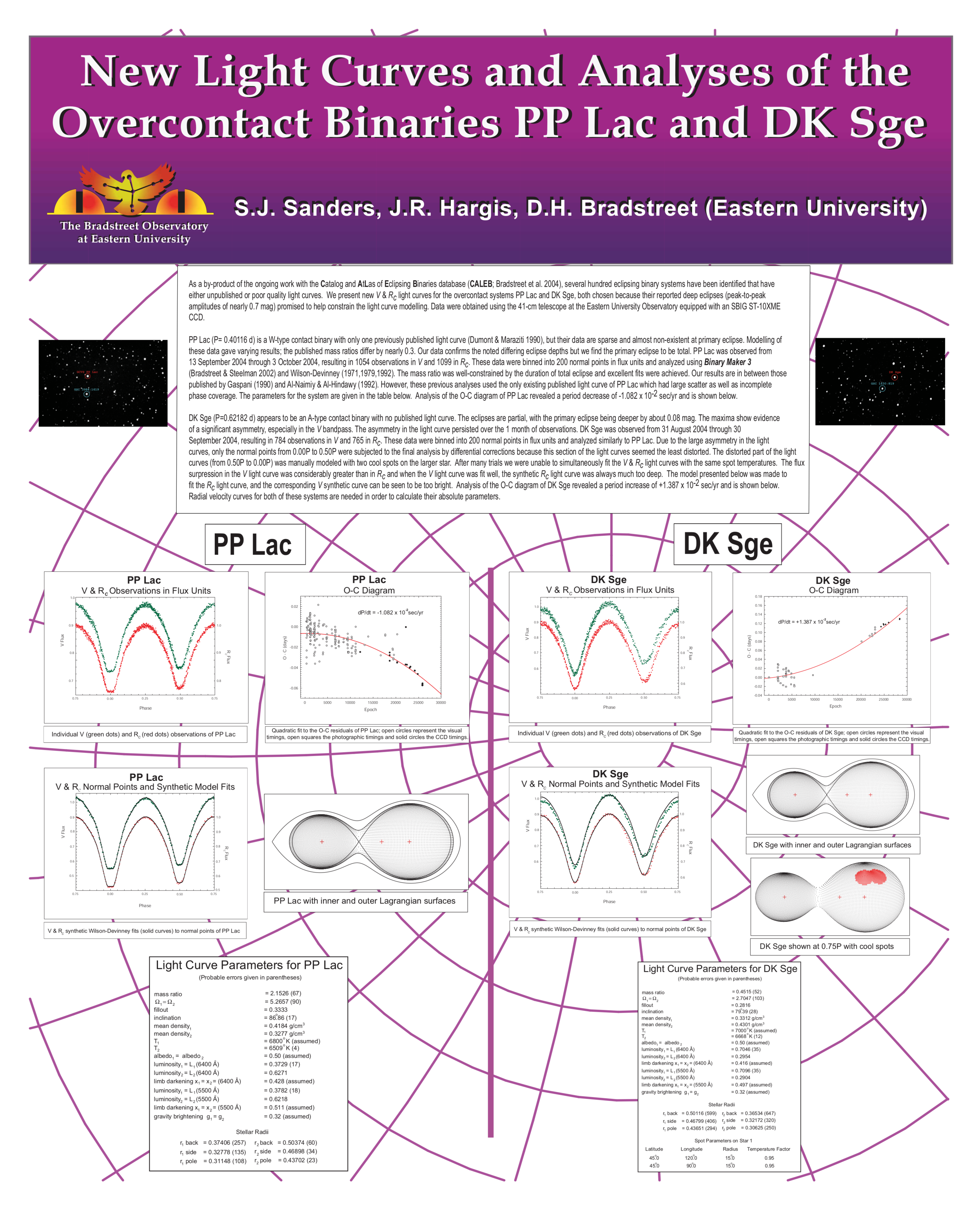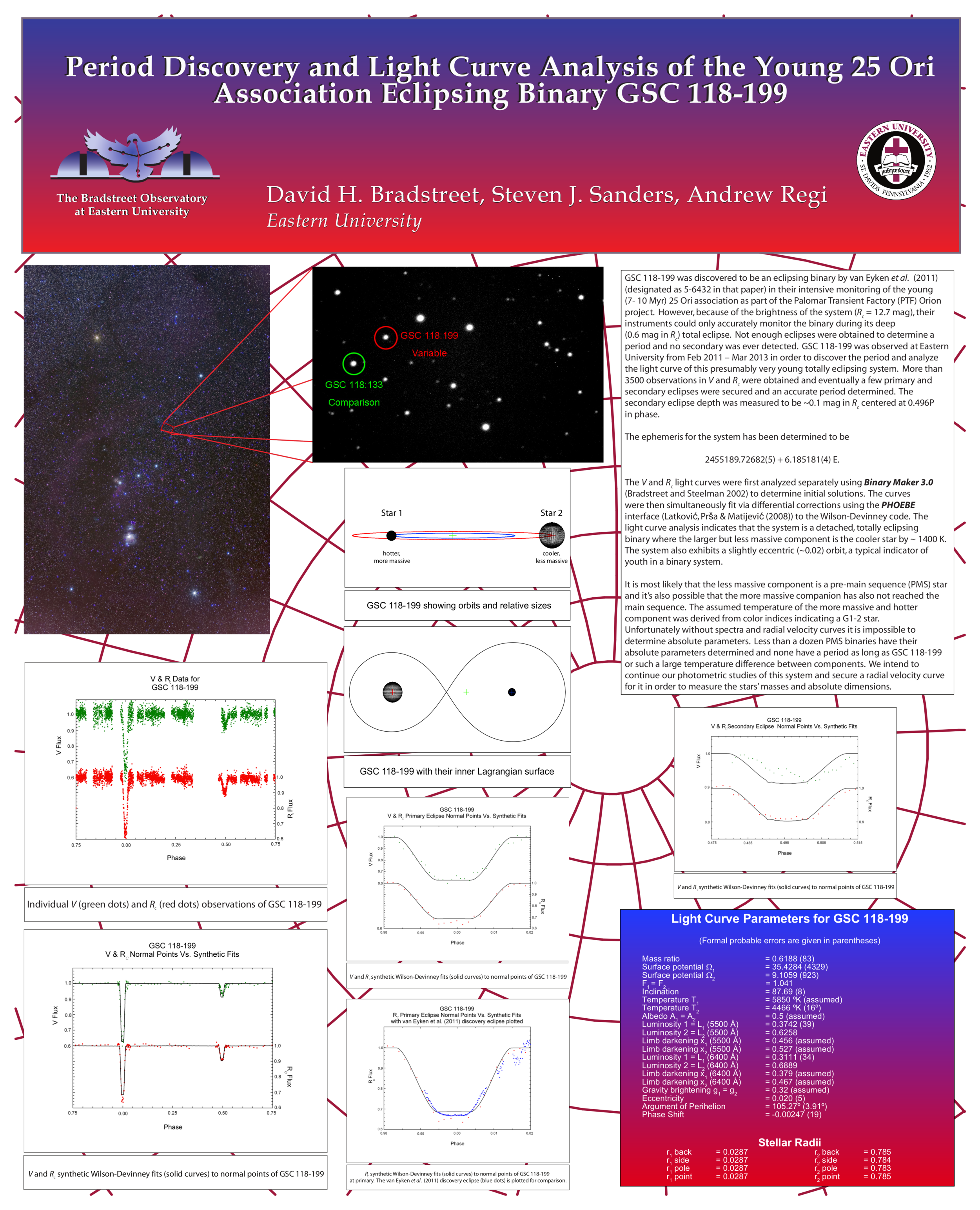



Binary Home
Binary Home
EASTERN UNIVERSITY
Since the observatory was built in 1996 the Bradstreet Observatory has been producing published research on binary stars. Using our 16-inch Meade telescopes we have obtained data on over 50 eclipsing binary stars in the past 20 years and have no plans on slowing down.
Students work closely with professional astronomers and participate in publishable research, and present papers at professional meetings. As a student you will spend nights in the observatory gathering data which will be reduced into a light curve. A light curve is a study of light over time. Depending on how the light changes over time we can discover many traits about the stars which lead to better understanding God's creation.
Dr. David Bradstreet co-wrote a program called Binary Maker 3.0. It will take the light curves obtained from nights of hard work and help unravel the mysteries locked inside the stars.

Binary Maker 3.0
Binary Maker 3.0
Binary Maker 3.0 software allows users to analyze data in order to get absolute parameters of eclipsing binary stars. Using both light curve and radial velocity data the user can input numerical values in attempts to match the real data to the synthetic data. In other words, astronomers try to match the data gathered from a telescope to a mathematical fit.
Type in the parameters in order to fit the data to a mathematical fit.
- Users may input a wide variety of data ranging from the temperature of the stars to the eccentricity of the orbits.
- Robust manual which comes with the program to help users understand all of the parameters.
- Will graphically plot the stars to give users an idea of what they look like during each part of the phasing of the binaries.
Above we see the raw data on the left (red cross-hairs). This would be data obtained from a telescope and then reduced so it may be analyzed.
Above we see the mathematical fit (blue squares) applied to the raw data (red cross-hairs).
Below we see a 3-dimensional rendering of the binary star system according to the drops and rises of the light curve from Binary Maker 3.0.

PDF Gallery
PDF Gallery
The Bradstreet Observatory publishes research periodically. Official abstracts can be found here.
Click on any poster to see a closer look. You may also view and download the high resolution pdfs by clicking on the poster name below.















